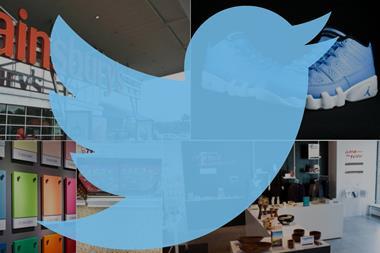Twitter is trying to succeed where Facebook failed in selling directly to consumers, however it may face an uphill battle according to ecommerce experts.
Its new venture, Twitter Commerce, is studying a potential tie-up with US shopping site Fancy, in which Twitter founder Jack Dorsey is an investor as well as a board member. Leaked documents reveal that Twitter users will be able to purchase directly from tweets with a “buy with Fancy” button.
Twitter Commerce comes on the back of Facebook’s attempt to monetise its huge community with its Gifts initiative but it was scrapped after anaemic demand. Even retailers’ own attempts to set up shop on the social network were made in vain with the likes of Asos, Oasis and Gap, closing their transactional Facebook stores.
Michael Ross, co-founder of online consultancy Ecommera, says that Facebook failed because its users don’t use the network for shopping and argues that Twitter has the same, possibly insurmountable, hurdle to overcome.
“If a person is on Google they are in the mindset to search and find things but on Twitter or Facebook they’re looking for gossip or breaking news. I’m sure only a small percentage of its users are doing product research,” he says.
Forrester vice-president and principal analyst for e-business and channel strategy Martin Gill agrees and says that social networks such as Pinterest and Instagram, which are a lot more product-related, are better suited to operating shopping sites.
“Social networks have evolved to serve different purposes. Twitter and Facebook are about socialising and news,” he says. “Smart retailers such as M&S have used the likes of Facebook to engage with customers about things they care about such as Percy Pig rather than trying to sell.”
Meanwhile, Vicki Day of Mrs D Daily argues that bloggers who make sales, like herself, sell via Twitter and that brand account tweets drive sales (in fact, while researching this article I stumbled upon a quirky toaster on Amazon’s Twitter account that I have since bought).
Ross, however, warns that it will be tricky for Twitter to get the model right. Online customers seek ease and convenience while making purchases but also need to know they are buying from a trusted source.
Working with a third party such as Fancy.com means that customers presumably have to register with its site, Ross points out, which adds a barrier for customers to buy.
While this is true, and initiatives such as one-click purchasing should stimulate sales, customers also need to have confidence in who they are buying from. “People what to know when the product is going to arrive and their delivery options,” says Ross.
While social network shopping may be just a “tweet dream” at this stage, Gill says that might not always be the case and Twitter’s tie-up with Fancy is a low-cost way to test an evolving market.
It is not the first time Twitter has eyed using ecommerce to drive revenue following its pilot with American Express last year which allowed card holders to ‘pay by tweet’.
If and when social media users decide they are ready to shop, Twitter is clearly keen to capitalise.
Analysis: Twitter faces an uphill battle to make its ecommerce venture a success
- 1
 Currently reading
Currently readingAnalysis: Twitter faces an uphill battle to make its ecommerce venture a success
- 2



























No comments yet